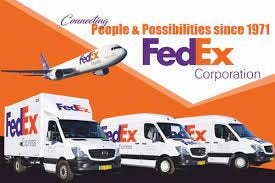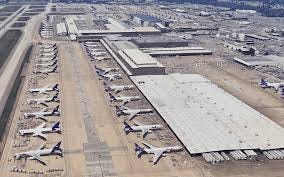Hey hams,
Welcome back to One Start, where we break down the 0 to 1 journeys of startups and companies, fueling your own entrepreneurial leap.
Today, we’re diving into story of Fred Smith and the birth of FedEx.
The 1970s Shipping Crisis Explained:
In the 1970s, a global oil crisis caused fuel prices to soar, forcing airlines to slash night flights, the primary time cargo was transported. At the same time, new passenger planes like Boeing’s 747 prioritized seating over freight, leaving little room for packages. This created chaos:
Hospitals couldn’t reliably ship organs, blood, or medical supplies.
Tech companies faced weeks-long delays for critical computer parts.
Banks piled up checks waiting to be cleared across the country.
Big companies like Ford and the U.S. Postal Service tried to fix the problem by launching overnight airmail services, but all failed. The logistics industry was stuck in a deadlock, businesses desperately needed fast, reliable shipping, but experts saw it as a dead field. The world was waiting for a solution no one had cracked yet.
Why Fred Smith?
Everyone knew the shipping gap was a goldmine… but no one wanted to touch it. Because that would require convictionn in idea , belief in one self and quite a pesistence. Enter Fred Smith, wasn’t some random guy with a wild idea. His life primed him for this fight:
Grew up around trucks, buses, and steamboats. His dad built the Dixie Greyhound bus line, but died when Fred was 4. His mom raised him to work hard and not coast on family money.
Joined the Marines after college. Survived two tours in Vietnam, leading troops in combat. Earned medals for bravery (Silver Star, Purple Hearts) and learned to make life-or-death decisions.
Wrote a term paper in 1965 proposing a dedicated overnight air freight system. His professor graded it a C, calling it unrealistic.
1971: FedEx Takes Flight
In 1971, Fred Smith launched Federal Express Corporation (FedEx) to solve the shipping crisis. Here’s how he started:
Air Taxi Model:
To avoid strict airline regulations, FedEx operated under “air taxi” rules, which allowed smaller planes to fly cargo without heavy oversight.Pan Am Deal:
FedEx bought 2 Falcon jets directly from Pan Am’s struggling business jet division. Pan Am had exclusive U.S. rights to sell French Dassault Falcons but was desperate to offload them post-oil crisis.Trust Fund Gambit:
Fred used his inheritance (4M)and leveraged his family's 72M trust fund as collateral to secure loans. Banks in Memphis and Little Rock backed him; Wall Street did not.CAB Rule Change:
The Falcon jets exceeded weight limits for air taxis. Fred lobbied the Civil Aeronautics Board (CAB) in 1971 to revise the rules, setting the stage for approval in 1972.
By year’s end, FedEx had planes, a Memphis hub, and a plan, but no revenue, massive debt, and skeptics everywhere.1972: The Year FedEx Doubled Down
Fred hired two consulting firms, AT Kearney and Aerospace Advance Planning Group (AAPG)to study his idea for $75k each.These reports later helped convince skeptics.
FedEx finalized a deal to buy 23 Falcon jets from Pan Am, with deliveries spread out (one jet per month until 1974). They later bought 10 more, totaling 33 jets. Cost: $56.1 million.
Fred recruited pilots, salespeople, and managers. He targeted “entrepreneurial types” willing to take risks. Some, like Roger Frock (from AT Kearney), joined for stock options and excitement.
FedEx underbid competitors to win a U.S. Postal Service contract. It generated early cash flow and credibility.
FedEx flew trial cargo like parts for Ford but couldn’t charge due to lingering regulatory issues.
FedEx was originally named “Federal Express” because it planned to serve the Federal Reserve, transporting checks overnight as its first major client. However, internal rivalries among Reserve banks killed the deal, leaving FedEx without its dream customer.
By December 1972:
Revenue: $2.8 million (from airmail, charters, pilot training).
Losses: $0.93 million.
Debt: $21.7 million.
1973: FedEx’s Year of Survival
1973 was a make-or-break year for FedEx, marked by near-collapse, desperate gambles, and hard-won progress:
FedEx launched with high hopes, but on the first night, only six packages arrived. Morale was shattered.
With cash running out, Fred Smith falsified loan documents to secure $5 million, using his family’s trust fund as collateral.
Desperate, Fred flew to Las Vegas, won $27,000 at blackjack, and saw it as a sign to keep going.
FedEx acquired LRA for $2.5 million, gaining control over aircraft remodeling and settling critical debts.
Operations moved to Memphis International Airport, chosen for better weather, cheaper hangar space, and its central U.S. location.
In April 1973, FedEx relaunched with a 25-city network. This time, 186 packages arrived on the first night. By July, nightly shipments crossed 1,000.
Investors removed Fred as CEO, replacing him with an ex-Air Force general. Employees revolted, forcing his reinstatement within 24 hours.
Fred’s sisters sued him over the forged loans. He was acquitted, but the scandal nearly destroyed his credibility.
By year’s end, FedEx was still bleeding, but with these battles fought, 1974 marked the beginning of a turnaround.
1974 onwards:
Earned profit of $3.5M in 1976, proving haters wrong.
Focused on urgent shipments (tech parts, medical supplies).
Raised $300 million for IPO in 1978 to fund expansion. Stock price soared as FedEx became a Wall Street darling.
1984: Launched international deliveries to Europe and Asia.
1989: Bought Flying Tigers for $880M, gaining routes to 21 countries.
2020: Delivered 600M+ COVID vaccine doses globally.
“Absolutely, Positively Overnight” became a global standard.
Invented barcode tracking (cut lost packages by 90%).
Today
FedEx operates with an annual revenue of $87.7 billion and a 6.3% operating margin, delivering 16 million packages daily across 220+ countries. With a workforce of over 500,000 employees, a fleet of 700+ aircraft and 200,000+ vehicles, it remains a global logistics powerhouse. FedEx is heavily investing in AI and automation to optimize operations, targeting $2.2 billion in cost reductions .The company is also committed to carbon-neutral operations by 2040, integrating electric vehicles and sustainable logistics solutions. As FedEx continues to evolve, its focus on efficiency, innovation, and sustainability is shaping the future of global shipping.
Pillars:
Peace of Mind – Customers relied on FedEx to ensure timely deliveries with packages arriving in perfect condition.
Consistent Marketing – A strong, unified presence across digital and traditional channels reinforced trust and reliability.
Customer-First Innovation – Investing millions in research and adopting new technologies to enhance speed, efficiency, and operations.
A Recognizable Global Brand – The signature purple-orange identity and promise of overnight delivery made FedEx a household name.
PSP Philosophy: People-Service-Profit. Treat employees well → better service → more profit.
Implement in your journey:
Boring problem: FedEx owned “overnight” before it was cool.
Embrace “scrappy”: Forge loans? Not advised. But hustle like your life depends on it.
Culture is armor: Loyal employees will fight for you.
Fred retired in 2022 after 50 years. His final email to employees:
“Never accept ‘impossible.’ Never stop innovating. And always, always take care of the team.”
He didn’t just build a company, he invented modern logistics. Next time you get a package at 10:30 AM sharp from abroad, thank that stubborn Marine who turned a “C” paper into a global empire.
Want to surround yourself with more stories like this? Join the One Start community and fuel your journey with insights, inspiration, and connections!
Until next time,
Shiva
P.S. - To go in depth read Changing How The World Does Business by Roger Frock






